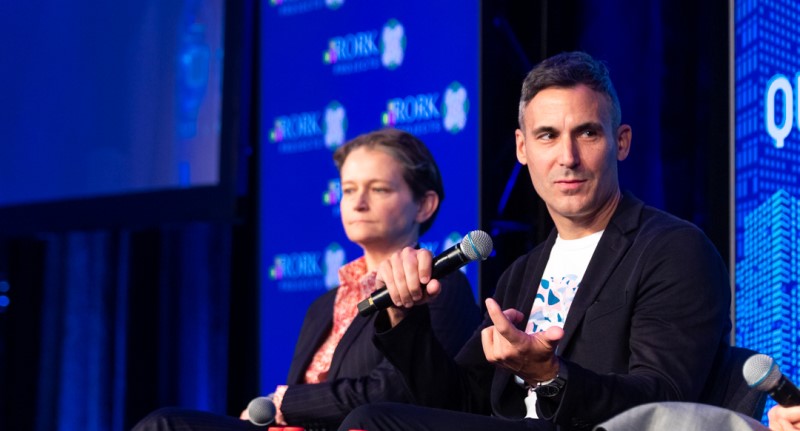- New typologies include the interweaving of work, life, and more
- Cultural institutions can help create soul in a district
- Examples include Stony Island Arts Bank and Saint Ann's Warehouse
Creating a city with heart and soul post-Covid has become the focus for urban planners and designers.
The changes include elevated levels of integration across work, education, and transit, with new typologies and ‘programming’ appearing across the globe.
Designers are also looking to create cultural institutions as the catalyst for positive change.
Changing the way people think
Skidmore, Owings and Merrill’s (SOM) Scott Duncan recently spoke at a panel about the Central Place Sydney (CPS) development and the methodology used in ‘Creating Soulful Places’.

Duncan is a design partner for the renowned firm and is the international design lead for the $3 billion joint venture development between Frasers Property Australia and Dexus* to be located at Tech Central.
“Central Place Sydney’s future focussed design model is reflecting world trends in approach to density that global cities strive for, where transit is converging allowing easy access to come and go from the CBD to points beyond,” said Duncan.
“Tech Central and CPS are representative of a new typology of urban development that weaves together the new workplace, academia and transit around the digital economy.”
Scott Duncan, Design Partner, Skidmore, Owings and Merrill
“Central Place Sydney will completely change the way people think and interact with this neighbourhood – adding vibrancy to this side of the city with populations of people coming and going daily, network of open spaces, transforming the laneways in the area,” added Duncan.
One catalyst at a time
The introduction or reintroduction of cultural institutions into emerging districts has been the catalyst for positive change in cities around the world. Duncan recalled Theaster Cate’s Stony Island Arts Bank in Chicago, and Saint Ann’s Warehouse in Brooklyn’s DUMBO neighbourhood as exemplars of the concept.
The panel discussion centred around creating cities with ‘soul’, the impacts of technology, the rehabilitation of cities globally post-Covid, integrating the connection to country into urban development and the design and implementation of complex projects including large-scale mixed-use, transportation, commercial, retail and residential developments.

Duncan also discussed authenticity in urban design, giving greater respect for history and the incorporation of it in a meaningful and poetic way.
Using examples such as Moynihan Station in NYC and Kings Cross in London, he outlined the programming of public spaces, creating experiences for the people who occupy the workplaces and what else is on offer in the locality for employees of the future – highlighting the significance of non-physical aspects to create the sense of ‘soul’.
A waltz with history
Environmental impacts are front of mind for designers, with the response to nature’s desperate cries potentially seeing thoughtful and creative reuse of existing buildings.
“One way to choreograph ‘soul’ in our cities is to consider the aspect of history in the design,” said Duncan.
“Carbon reduction means that we reuse parts of buildings or buildings in their entirety.”
“The ‘soul’ of a reused material is palpable. A reused building has a ‘soul’. Our challenge as designers is about how we can bring those to life.”
The panel outlined explored the elements required to create ‘soulful places’, how to connect with the broader community, connect to country, respect values and pay homage to history to heritage and place. They unpacked the importance of collaboration – every element has to work together from the design, maintenance, retail, safety and policy.

Construction of the two 36 and 38-storey towers and a low-rise Connector building featuring circa 133,000 square metres (sqm) of premium office and 5,000 sqm of retail space designed to deliver progressive workspaces for the future at Central Place Sydney is due to commence later this year, with the first stage of the development expected to be delivered in 2028.
Central Place Sydney along with the neighbouring Atlassian Central and proposed Toga development will form the centrepiece of Australia’s innovation engine at Tech Central – Sydney’s most significant CBD development in over a decade.
Central Place Sydney and Frasers Property have worked with key project partners including Chicago-based SOM and multi-disciplinary international design firm Fender Katsalidis to develop the design as well as workplace psychologists and landscape architects.
~~
* 25% Dexus, 25% Dexus Office Partner.








